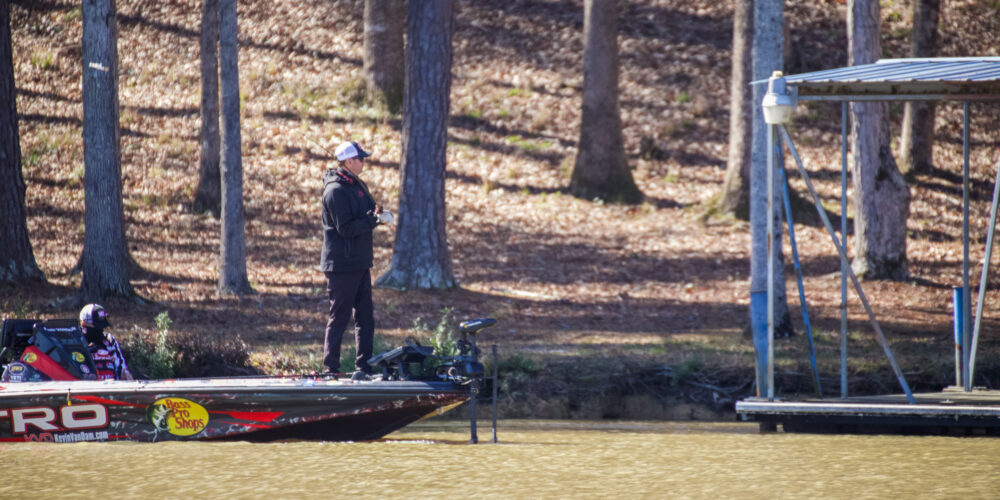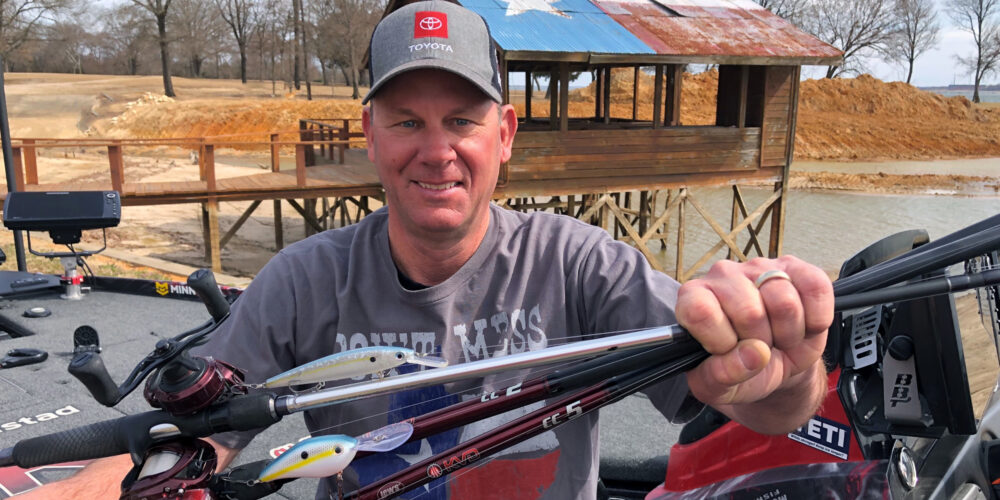In Part 1 of my Skip Cast Like a Pro blog, I addressed some of the nuts and bolts of the deadly skip casting technique, which employs accuracy and stealth with a baitcaster to catch fish from places where others will not put a lure. In Part 2, I want to talk about line, lures and a couple of other tips that are a tremendous help in the skipping game.
Lining Up for a Skip Cast
Whenever the skip casting discussion comes up at seminars, a lot of questions are centered on the best line types and sizes for skip casting. Intuitively it would seem that lighter lines would come off the reel better and therefore make for easier skipping. Actually, skipping a baitcaster is one of those techniques where you want to use the heaviest line you can get away with.
Heavier line just makes line management easier, mostly because bigger lines take up more room on the spool. Skipping is not the place for high-capacity reels filled to the brim – that’s a disaster waiting to happen. The best combination when skipping with baitcasters is heavier line with less line on the spool. As I pointed out in Part 1, this is exactly why Lew’s specifically designed their Pro SP skipping reel with a shallow spool that only holds 40 yards of 20-pound test diameter line.
My favorite skipping line is 50-pound test Tour Grade braid made by Strike King. It’s my go-to line for skipping frogs and swim jigs around heavy cover in colored water. If I’m skipping in sparser cover and/or clearer water then I’ll go to a 20-pound test XPS Fluorocarbon. As long as the lure isn’t sinking far down into the water column, I’m not that worried about downsizing line. I don’t think fish can see the line that well with lures like frogs and subsurface swim jigs.
Now, if I have to skip finesse jigs on deep docks where I’m letting the jig fall to the bottom in clearer water, then I’ll bump down to 14-pound test fluorocarbon.
Lures and Trailers
My two favorite skipping lures are a Strike King Sexy Frog and a swim jig. Both are efficient skipping tools for pinpointing a plate-size strike zone located back under some kind of over-hanging cover.
Strike King makes a couple jigs that are excellent for skipping. Dock-skipping master Andy Montgomery had a hand in designing Strike King’s Tour Grade Skipping Jig just for this technique. The jig features a flatter head, a superior skirt collar to hold the skirt in place during the rigors of skipping and a screw-lock keeper for trailers.
When I skip jigs, I prefer to skip swim jigs around shallow cover and vegetation. For this, I use my KVD Heavy Cover Swim Jig in a 1/4- or 3/8-ounce size.
As for trailers, I’m a big fan of the Rodent for skipping applications because it has a bulkier body with flat flappers that don’t catch as much water. A Rodent teamed with a ½-ounce Tour Grade Skipping Jig is a perfect combination for docks, marinas and moored pontoons. When skipping around shallow bank cover like bushes, vegetation and overhanging trees with my swim jig I’ll go with a Rage Bug for more lift and pulsing action.
Skip casting, however, is not limited to just jigs and frogs. A couple of the less-talked-about skipping baits on tour include vibrating jigs and buzzbaits. Skipping buzzbaits under docks has been a secret on tour for years; however, the cat is out of the bag now thanks to Strike King’s new Skip’N Buzz, which is specifically engineered to skim into dark haunts that have never heard the gurgle of a buzzbait before. The design features a shorter compact frame, a keeper that holds the frame square at all times and a unique molded head that allows any kind of plastic trailer to be threaded completely over the lead. The Skip’N Buzz comes with both a buzzing toad and a Rage Swimmer as trailers.
Another sneaky skipping lure is a topwater popper. Poppers are great for staying in the strike zone for an extended amount of time and aggravating fish into biting. The KVD HC Splash Jr., is a smaller popper that skips well and chugs loudly for its size. I fish it on 15-pound test monofilament with a 7-foot KVD-GC4 rod to get it in the right places. If you are faced with fishing behind others on heavily pressured banks, skipping a popper under docks and any tiny spots of shade is an unconventional technique that is definitely different.
Skipping Accessories
As a final word of advice for skipping, there are two must-haves that will make your life much easier when skimming lures into hard-to-reach places. One is super glue. Super-gluing trailers onto baits is the only way to go.
My favorite glue is the Loctite Super Gel that comes in a triangle-shaped bottle with the squeeze handles on both sides. This is one of the best bottle designs to prevent the glue from gumming up in the nozzle or gluing the bottle shut. The squeeze grips on the side allow for tiny applications of the glue. Gluing trailers is a case where less is more: just the tiniest dab on the lure before threading on the trailer is all you need. Even if lures have screw or spring lock type keepers, I still put a touch of glue on there to secure it in place right where I want it.
Also, when skipping you will want to use line conditioner regularly to help keep the line clean, supple and lubricated. My KVD Line and Lure conditioner is a popular product during skipping tournaments. You’ll find when skipping a lot that film and grime on the water’s surface will cling to your line, guides and reel. This is one of the gremlins that causes backlashes. Spraying a line conditioner on your spool, level wind and guides will work miracles in keeping that gunk from gumming up your skip casts and make them go farther, guaranteed.






Leave A Comment